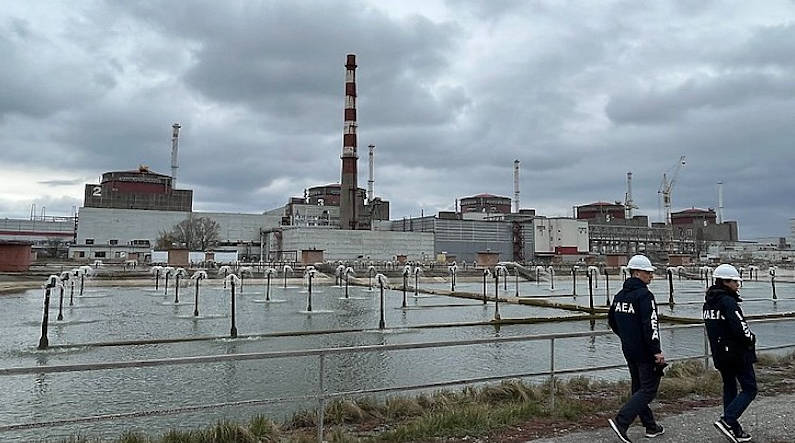
The dam was damaged early on Tuesday, prompting widespread flooding and evacuations. The Zaporizhzhia nuclear power plant – Ukraine and Europe’s largest – is about 140 kilometres upstream from the dam so not in an area directly affected by flooding. But the damage has led to a fall in the level of the reservoir, which is used to supply cooling water to the plant.
In its latest update the IAEA reported that between 10:00 and 20:00 local time on Tuesday the reservoir fell by 83cm to 15.44 metres. If the level falls below 12.7 metres the plant will not be able to pump water to replenish its water at the site. It is an evolving situation, but that level could be reached within a day or two, the IAEA says.
However, this sort of fall in the reservoir levels is a scenario which has been planned for, including in stress tests carried out after the Fukushima earthquake and tsunami and also by Ukraine’s nuclear operator Energoatom, at the request of the State Nuclear Regulatory Inspectorate of Ukraine (SNRIU), over the past winter. According to the head of SNRIU, Oleg Korikov, the measures outlined meant that the reservoir’s lower water level “should not affect the state of nuclear and radiation safety of the Zaporizhzhya NPP, provided that these measures are implemented” and with the reactors remaining in their current shutdown state, which means a lot less cooling water is required.
In its update the IAEA said that, even when water levels are too low for the usual pumping system to operate, “the existing water in the ZNPP site’s sprinkler and cooling ponds as well as the adjacent channels can still be used for some time to cool the reactors and the spent fuel pools in the reactor buildings … In addition, a large cooling pond next to the site – the main alternative source of water in the absence of the reservoir – is currently full and has enough in storage to supply the plant for several months as its six reactors are in shutdown mode”.
“Also, if needed, the site can access a deep water-filled excavation in the ZNPP cargo port area, the water system of the nearby city of Energodar, and use mobile pumps and firefighter trucks to fetch water,” it adds.
Restrictions on the use of water have been brought in to focus it on essential safety and cooling functions. Grossi added: “There is a preparedness for events like this … which will help staff to handle this new challenging situation. But, clearly, this is making an already very difficult and unpredictable nuclear safety and security situation even more so.”
Russia’s Tass news agency reported a spokesman for the Nuclear Safety Institute of the Russian Academy of Sciences as saying “the water level in the reservoir supplying cooling water to the reactors is at a sufficient level and is being monitored. We are keeping a close eye on the situation … the plant’s employees are in control of the situation.”
Meanwhile Renat Karchaa, adviser to the CEO of Russia’s Rosenergoatom, told Tass that the number of IAEA inspectors at the Zaporizhzhia nuclear power plant “will increase several times”, confirming Grossi’s comments to reporters earlier this week (before the dam was breached) that he wanted to “reinforce” and increase the size of the team, to reflect their wider reporting responsibilities in monitoring the five safety principles outlined at the UN last week.
Grossi had said he was not sure when the enlargement of the team would take place and that it might be at the next rotation – which he has said he will lead, and which will take place next week. Ukraine’s President Volodymyr Zelensky said he discussed the situation at the plant with the IAEA director general, and agreed with Grossi on visiting Ukraine in the coming days.
In a separate development, the IAEA said that its experts at the Chernobyl site have reported a forest fire near the Paryshev village in an area not reachable from the Chernobyl side because of damage to a bridge. It is not assessed to be a major fire and, the IAEA says, “there has been no increase in the radiation levels reported to the IAEA International Radiation Monitoring Information System and the fire does not present any radiological risk to the population or staff working at the Chernobyl site”.